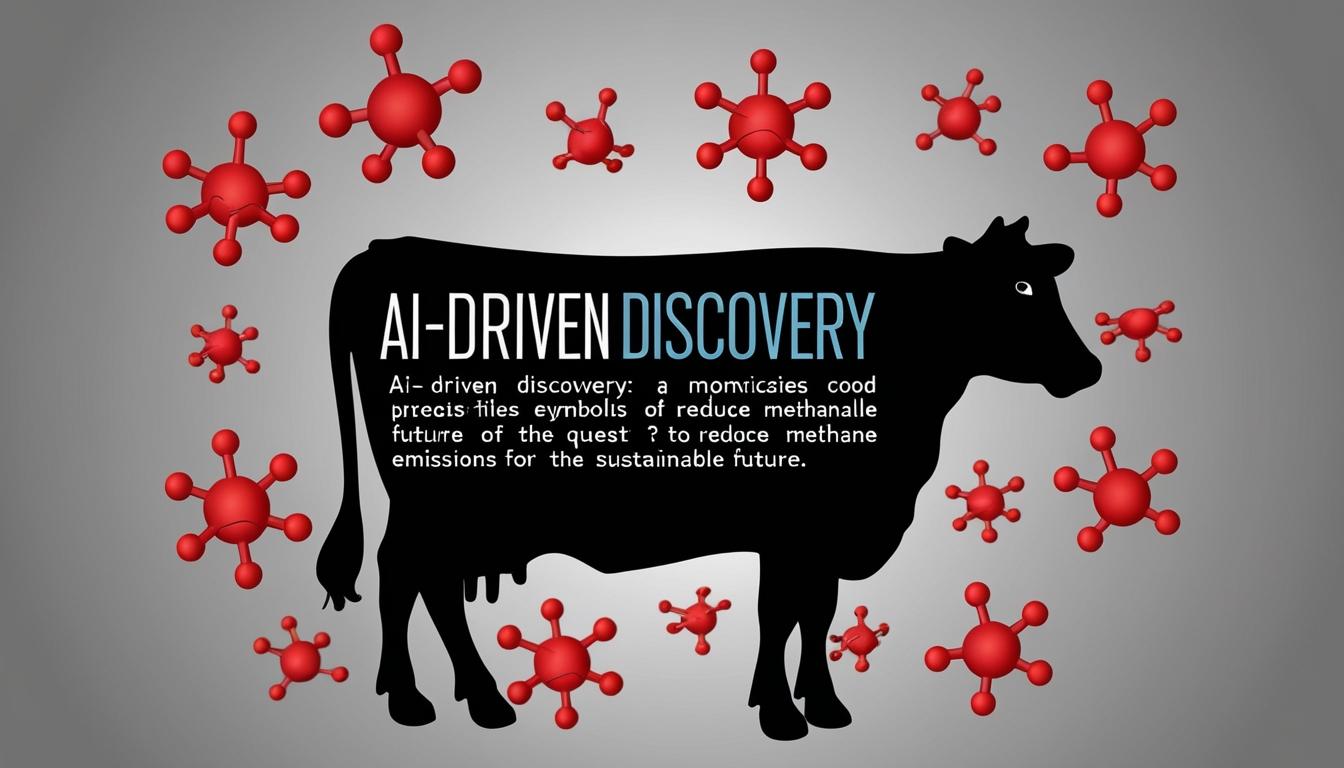A recent study conducted by the U.S. Department of Agriculture's Agricultural Research Service (ARS) in collaboration with Iowa State University (ISU) highlights the potential of generative artificial intelligence (AI) in addressing the challenge of enteric methane emissions in cattle. This emissions issue is significant, as it contributes approximately 33 per cent of U.S. agriculture's emissions and about 3 per cent of the country's total greenhouse gas emissions.
Simon Liu, Administrator of the ARS, emphasized the urgency of this research, stating, “Developing solutions to address methane emissions from animal agriculture is a critical priority. Our scientists continue to use innovative and data-driven strategies to help cattle producers achieve emission reduction goals that will safeguard the environment and promote a more sustainable future for agriculture."
The primary source of methane emissions in cattle arises from enteric fermentation, a natural digestion process occurring in the rumen, one of the four stomach compartments of cattle. Researchers have pinpointed a variety of compound molecules capable of inhibiting methane production in this compartment. A notable contender, bromoform, which is naturally sourced from seaweed, has shown potential for significantly reducing emissions—by up to 98 per cent when administered to cattle. However, the carcinogenic nature of bromoform imposes constraints on its application in food-producing animals, prompting the need for alternative substances with similar efficacy but without adverse health effects.
In light of these challenges, the research team from ARS’s Livestock Nutrient Management Research Unit and ISU’s Department of Chemical and Biological Engineering employed generative AI alongside extensive computational models to accelerate the discovery of non-toxic molecules that mimic the properties of bromoform.
Matthew Beck, a research animal scientist previously with ARS, expressed the approach taken by the team, stating, “We are using advanced molecular simulations and AI to identify novel methane inhibitors based on the properties of previously investigated inhibitors, but that are safe, scalable, and have a large potential to inhibit methane emissions."
The researchers leveraged existing scientific databases to construct large-scale computational models that simulate the discovery phase for methane inhibitors. AI was utilised to predict molecular behaviours and identify candidates for further laboratory testing, creating a feedback loop where experimental outcomes enhance future predictions, termed a graph neural network. Ratul Chowdhury, an Assistant Professor at ISU, elaborated, “Our graph neural network is a machine learning model which learns the properties of molecules, including details of the atoms and the chemical bonds that hold them.”
The study found that numerous molecules exhibit similar characteristics to bromoform within what they identified as a "functional methanogenesis inhibition space," suggesting a collective potential for effective methane inhibition.
The application of AI not only aids in discovering novel molecules but also facilitates deeper insights into the interactions within the cow's microbiome and its proteins, which can be particularly advantageous for animal nutritionists. Jacek Koziel, a research leader at the USDA-ARS, noted the broader implications, stating, “This is why combining AI with laboratory research, through iterative refinement, is a valuable scientific tool. AI can fast-forward the research and accelerate these several pathways that animal nutritionists, researchers, and companies can pursue to get us closer to a very ambitious goal of limiting greenhouse gas emissions and helping mitigate climate change.”
As part of their findings, the study outlines a detailed cost analysis for conducting this research on a per molecule basis, providing financial insights that can assist in guiding future investments in this field.
The findings by Chowdhury, Beck, Koziel, and their co-authors—including Nathan Frazier from ARS and Logan Thompson from Kansas State University—have been published in the journal Animal Frontiers. The USDA's ARS continues to play a crucial role as America's chief scientific research agency, committing to innovative solutions that address critical agricultural challenges.
Source: Noah Wire Services
